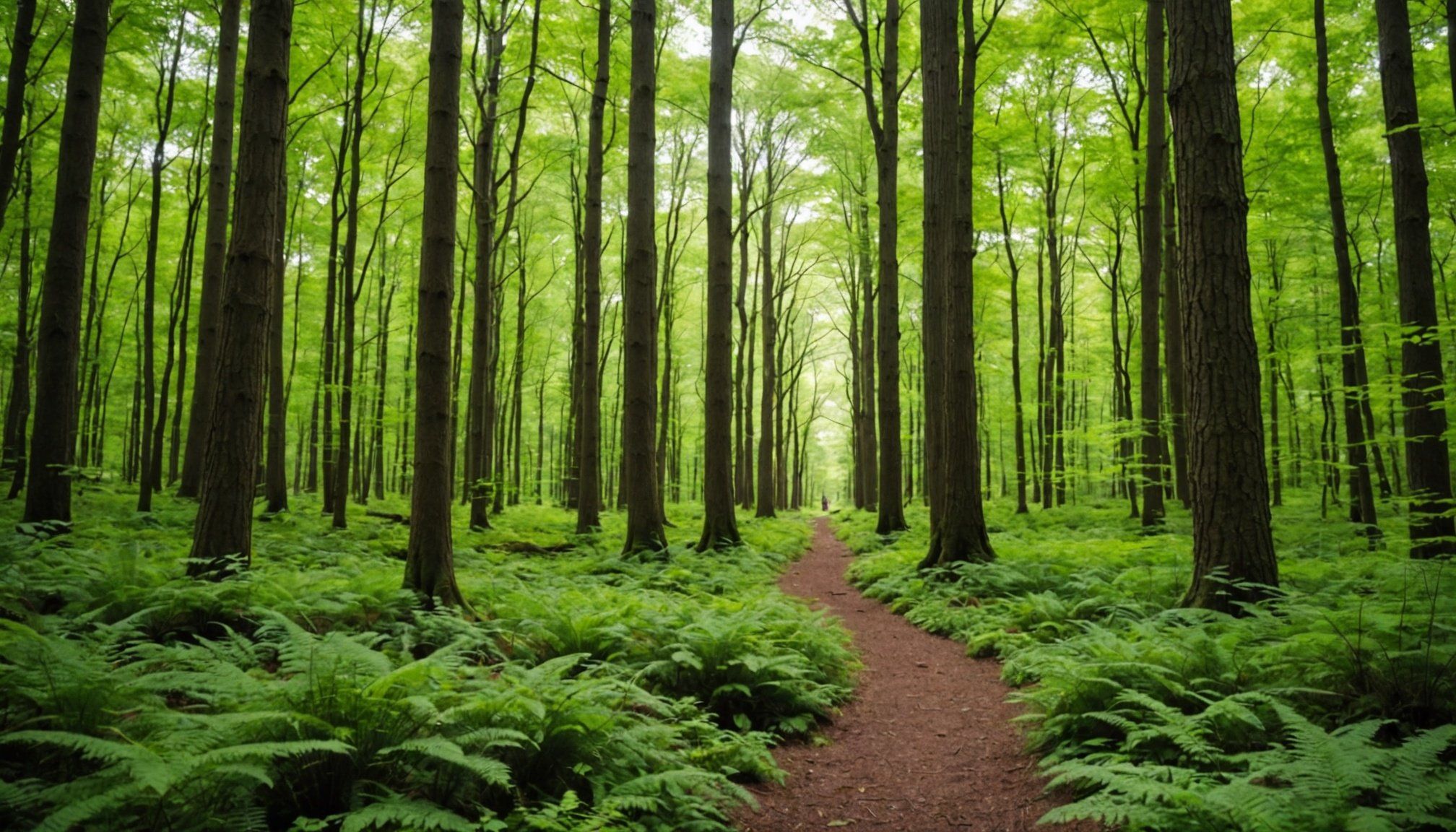Introduction to Forest Bathing
Forest Bathing has emerged as a transformative practice, intertwining the calming allure of nature with tangible mental health benefits. This ancient concept, rooted deeply in Japanese culture as ‘Shinrin-yoku’, entails a full-body nature immersion that goes beyond a mere walk in the woods. Unlike typical outdoor activities, forest bathing emphasizes the mindful consumption of the natural environment, where all senses are engaged consciously.
Traditionally, civilization has always seen nature as a formidable teacher and healer, a perception grounded in the understanding that trees and forests convey a unique solace. As a therapeutic practice, forest bathing facilitates profound relaxation, aids in balancing emotions, and contributes significantly to overall well-being. The mental health benefits extend to reducing stress and anxiety, uplifting mood, and even enhancing cognitive functions.
In parallel : Top Strategies for Effectively Managing Restless Leg Syndrome: Unlocking Relief and Comfort
The contemporary surge in interest highlights a growing recognition of nature immersion as an effective self-care approach. The movement has gained momentum across the globe, drawing attention to its potential to profoundly impact urban and rural lifestyles alike. Many now adopt forest bathing as an antidote to the high-paced, technology-driven lives we lead, viewing it as a sanctuary—both physically and mentally.
Scientific Evidence Supporting Mental Health Benefits
The increasing interest in forest bathing isn’t solely anecdotal; it’s backed by numerous scientific studies demonstrating significant improvements in mental health. Research spearheaded in Japan and other countries has consistently shown that nature therapy can reduce stress hormones, lower blood pressure, and boost mood. These studies often employ randomized controlled trials, using precise data to compare forest bathing with other forms of relaxation, such as urban walks.
Also to read : Top Strategies for Effectively Managing Restless Leg Syndrome: Unlocking Relief and Comfort
A vivid example is a study where participants engaging in nature immersion exhibited reduced cortisol levels, indicating lower stress, compared to those in urban settings. Adding to this, exposure to natural environments has been linked to enhanced mental health clarity through the reduction of anxiety and depression symptoms. The mechanisms include increased parasympathetic nervous activity, which promotes relaxation, and decreased sympathetic nervous activity, which calms the ‘fight or flight’ response.
While therapy sessions often provide structured support, the self-directed nature of forest bathing makes it uniquely effective for many. It utilises the healing power of nature as a holistic complement to traditional therapy, providing a tactile and sensory-rich experience that can be both calming and invigorating.
Personal Transformation Stories
Personal Experiences of forest bathing serve as powerful testaments to its transformative power. Many individuals share profound testimonials of healing and rejuvenation, often turning to forest bathing during times of emotional turmoil or stress. These healing journeys reveal a common thread: the ability of nature to offer solace and clarity, facilitating emotional breakthroughs and psychological renewal.
Take Jessica, for instance, who found herself overwhelmed by the demands of modern life. Her story illustrates a remarkable shift. Through deliberate nature immersion, she discovered an unparalleled sense of peace, which diminished her anxiety significantly. This common narrative among practitioners emphasizes how forest bathing has become an integral component of their self-care routines.
An overarching theme is the emotional and psychological shift—practitioners often report feeling more grounded, present, and connected. Many describe experiencing a newfound appreciation for the simple miracles of nature. Further reflections note a significant reduction in stress and a boost in mental clarity, highlighting how personal transformation is a cornerstone of forest bathing experiences. These stories not only underscore the practice’s efficacy but also inspire others to embark on their own path of healing and discovery within nature’s embrace.
Practical Guidance for Engaging in Forest Bathing
Engaging in forest bathing offers numerous mental health benefits and a deep nature connection. It’s important to understand how to approach this practice effectively to maximise its potential. Here’s how to get started:
Preparing for Your Forest Bathing Experience
Before embarking on your journey, choose comfortable clothing that allows easy movement and is suited to the weather. Consider wearing layers, as they provide flexibility with varying temperatures in natural surroundings.
Best Practices for Immersion
To fully immerse yourself, opt for quiet, less-travelled paths rich in diverse flora and fauna. Start by taking slow, deliberate steps, letting each stride anchor you to the moment. Focus on your breathing, inhaling the forest air deeply. Listen attentively to the subtle rustling of leaves and the call of distant birds. Touch tree bark and leaves, engaging your sense of touch fully.
Tools and Accessories to Enhance the Experience
Bring along a lightweight backpack with essentials like water, a camera for capturing inspiring views, and a journal for reflections. Nature guides or mindful walk apps can provide soothing narratives and prompts to deepen your forest immersion. Select areas noted for their serene landscapes and tranquil settings to enrich your experience.
Nature’s Therapeutic Qualities
Nature’s Healing Power is deeply intertwined with our mental well-being, offering profound mental health benefits and effective stress relief. Natural environments provide a sanctuary that nurtures relaxation and rejuvenation. The biophilia hypothesis suggests an innate connection between humans and nature, asserting that this bond promotes emotional and psychological health. Spending time outdoors engages the brain in a soothing manner, calming anxieties and uplifting the spirit.
One of the therapeutic qualities nature harbours lies in its sounds and scents. The gentle rustle of leaves, the chirping of distant birds, and the earthy aroma of damp soil trigger a parasympathetic response in the nervous system, reducing stress and encouraging relaxation. This sensory engagement not only distracts from daily stresses but also fosters an internal sense of peace.
Moreover, recent studies highlight how immersing oneself in nature can bolster cognitive function, leading to clearer thinking and improved focus. The dynamic interplay of light, shadows, and colours in natural settings enhances visual stimulation, promoting mental clarity. Through these experiences, nature unfolds its powerful role in enhancing psychological well-being, serving as a timeless antidote to modern life’s incessant pressures.
Guided Exercises and Locations for Forest Bathing
Engaging in guided forest bathing exercises can significantly enhance your nature immersion experience, providing structured methods to amplify the mental health benefits associated with this practice.
Structured Exercises for Deep Engagement
Guided exercises often begin with breathing techniques to ground practitioners and foster mindfulness. Activities may include focusing on natural elements like the colour of leaves or the texture of tree bark. Simple practices like walking meditation invite you to pay attention to your steps and rhythm, fully engaging with the forest environment.
Recommended Locations
Some locations are renowned for their optimal forest bathing experiences. Japan’s Akasawa Natural Recreational Forest, known for its serene settings, facilitates deep connection with nature. In England, the New Forest National Park offers lush landscapes ideal for nature immersion. These sites provide tranquillity and diverse ecosystems, enriching the therapeutic journey.
Organised Retreats and Groups
Participating in retreat programmes led by experienced guides can offer valuable insight. Organisations like the Association of Nature and Forest Therapy guide practitioners through highly rewarding experiences, embracing the full spectrum of nature’s healing power. These groups structure activities designed to deepen the sensory and emotional engagement, enhancing the overall benefits of forest bathing.











